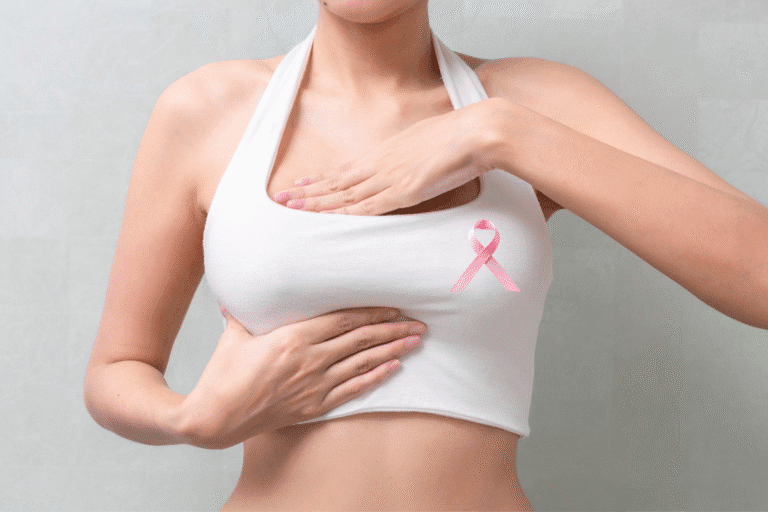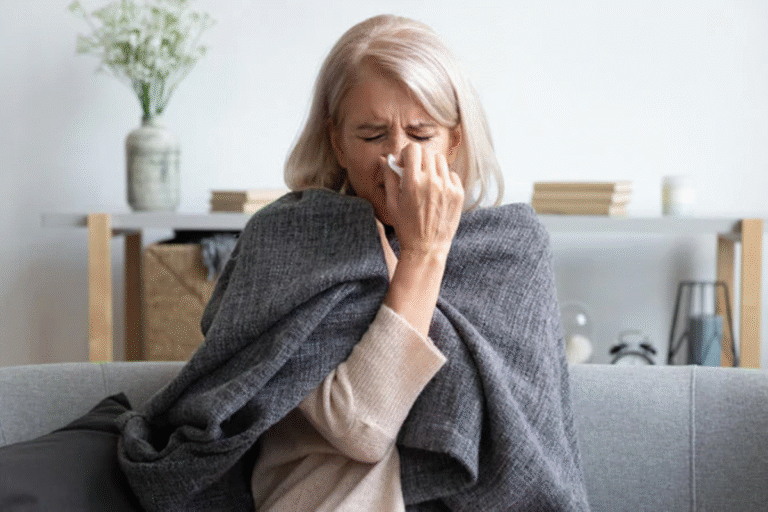
Rachel, 46, was doing everything “right.” She ate clean, worked out regularly, kept up with her annual physicals, and had no family history of breast cancer. She almost skipped her mammogram that year—life was busy, and she wasn’t worried. But when she got a call to come back for additional imaging, her heart sank. Days later, a biopsy confirmed she had early-stage breast cancer, even though she had never felt a lump. What saved her? Screening—and listening to her body.
What Is Breast Cancer?
Breast cancer occurs when cells in the breast tissue grow uncontrollably and form a tumor. While many people associate it with a noticeable lump, the truth is that not all breast cancers form detectable masses—especially in the early stages.
Breast cancer is the most commonly diagnosed cancer in women, and while it’s more common after age 50, 1 in 8 women will be diagnosed in their lifetime—and many are in their 40s.
The good news? Early detection saves lives. And for women navigating perimenopause or menopause, understanding symptoms, risks, and proactive steps is essential.
Why Perimenopause and Menopause Can Influence Risk
Hormonal shifts during midlife play a significant role in breast health:
- Estrogen and progesterone fluctuations can stimulate breast tissue growth and sensitivity
- Weight gain (common in midlife) increases estrogen production via body fat
- Hormone Replacement Therapy (HRT)—especially estrogen-only therapy in women with a uterus—can elevate risk if not properly balanced
- Insulin resistance and inflammation, also more common during perimenopause, can promote abnormal cell growth
This is why regular screening and personalized hormone care are critical during this phase of life.
Signs and Symptoms of Breast Cancer (Beyond a Lump)
While a lump is often the most talked-about symptom, many women with early breast cancer experience no lump at all. Other symptoms to watch for include:
- Changes in breast size or shape
- Nipple discharge (especially bloody or clear, not milky)
- Nipple inversion or flattening
- Persistent breast pain (not tied to your cycle)
- Skin dimpling or thickening (like an orange peel)
- Redness or rash on the breast or nipple
- Swelling in the armpit or collarbone area
If you notice any of these changes, schedule an evaluation—even if your last screening was normal.
Risk Factors for Breast Cancer
While family history is important, the majority of breast cancers occur in women without a genetic predisposition. Common risk factors include:
- Age 40+
- Personal or family history of breast, ovarian, or pancreatic cancer
- BRCA1/BRCA2 or CHEK2 gene mutations
- Early menarche (before age 12) or late menopause (after 55)
- Never having been pregnant or having your first child after age 30
- Long-term use of unopposed estrogen therapy
- Dense breast tissue
- Alcohol consumption
- Obesity and insulin resistance
- Previous radiation to the chest area
- Night shift work or circadian disruption
At Antigravity Wellness, we help assess your risk in context—not just check a box.
Screening: What You Need to Know
Early detection is critical. Here’s what’s recommended:
- Annual mammograms starting at age 40 (earlier if you’re high-risk)
- 3D mammography (tomosynthesis) provides clearer imaging for dense breasts
- Breast MRI or ultrasound may be added if you have dense tissue or elevated risk
- Self-awareness is key—monthly self-exams help you notice changes early
We also help clients understand how hormones, lifestyle, and inflammation can influence breast health—and support personalized screening strategies based on your full health picture.
Red Flags That Deserve Immediate Evaluation
Don’t ignore these symptoms—even if your last exam was “normal”:
- A new lump or thickening in the breast or underarm
- Persistent breast or nipple pain unrelated to your cycle
- Spontaneous nipple discharge (especially bloody)
- Dimpling, puckering, or skin changes
- Breast swelling or warmth (especially in one breast only)
If you’re on HRT and develop new breast symptoms, bring it up right away. Sometimes, dose adjustments or route changes are all that’s needed—but evaluation is always essential.
Functional Testing to Support Prevention
At Antigravity Wellness, we take a proactive approach to breast cancer risk:
✅ DUTCH Hormone Testing
- Evaluates estrogen levels and how you metabolize estrogen (some metabolites are more inflammatory than others)
✅ Genetic Screening & Family History Review
- To assess for BRCA, CHEK2, or Lynch syndrome risk indicators
✅ Inflammation & Metabolic Testing
- Markers like hs-CRP, fasting insulin, glucose, A1C, homocysteine
✅ GI MAP
- Gut health influences estrogen recirculation and detoxification
This data helps us guide nutrition, supplements, detox support, and safe hormone balancing for prevention and peace of mind.
Holistic Strategies to Support Breast Health
We believe prevention doesn’t come from fear—it comes from empowered care. Here’s how we support our clients:
✅ Anti-Inflammatory Nutrition
- Load up on fiber, cruciferous veggies, berries, omega-3s
- Support estrogen metabolism with broccoli sprouts, flaxseed, and green tea
- Avoid processed foods, excess sugar, and alcohol
✅ Movement
- Moderate exercise reduces risk by up to 25%
- Combine strength training, walking, and mobility for hormonal and metabolic balance
✅ Mind-Body Health
- Chronic stress increases inflammation and immune dysregulation
- Use tools like breathwork, vagal toning, and somatic practices
✅ Supplement Support (with guidance)
- DIM, calcium-D-glucarate, methylated B vitamins, and magnesium
- Curcumin, resveratrol, or green tea extract may support cellular health
We stock only professional-grade options in our Fullscript Supplement Shop, and always guide you on what’s safe and effective for your body.
Case Study: Meet Valerie
Valerie, 44, came to Antigravity Wellness for hormone support. She was fatigued, gaining weight, and feeling off. Her last mammogram was normal, but during her initial intake we uncovered:
- A family history of breast cancer (aunt and grandmother)
- Irregular periods and signs of estrogen dominance
- Dense breast tissue and no previous genetic screening
We ran a DUTCH test and found poor estrogen detox markers. She also had elevated fasting insulin and inflammatory markers.
We referred her for additional imaging, and early-stage DCIS (ductal carcinoma in situ) was detected. It was treated with surgery and radiation—and she returned to us to support recovery, manage inflammation, and rebalance her hormones safely.
Today, Valerie feels strong, informed, and back in control of her body.
You Know Your Body. We Help You Protect It.
Breast cancer doesn’t always start with a lump. It often starts with a whisper—a quiet shift in energy, tissue, or hormones. And when you know what to listen for, you can act early.
At Antigravity Wellness, we’re here to help you listen—to your body, your risk, and your intuition—so you can feel confident, clear, and supported at every stage.
Ready to take charge of your breast health and hormone balance?
👉 Book your Brief Initial Consult now
👉 Browse our evidence-based breast and hormone health supplements in the Fullscript Shop
Resources and References
- American Cancer Society. “Breast Cancer Facts & Figures 2023–2024.” https://www.cancer.org/cancer/breast-cancer.html
- Howell A, et al. “Risk determination and prevention of breast cancer.” Breast Cancer Res. 2014;16(5):446. https://doi.org/10.1186/s13058-014-0446-2
- Chlebowski RT, et al. “Dietary patterns and breast cancer risk.” JAMA Oncol. 2020;6(3):e195420. https://pmc.ncbi.nlm.nih.gov/articles/PMC9895856/
- Fabian CJ. “The ‘insulin connection’ in breast cancer.” Front Endocrinol (Lausanne). 2020;11:33. https://doi.org/10.3389/fendo.2020.00033




